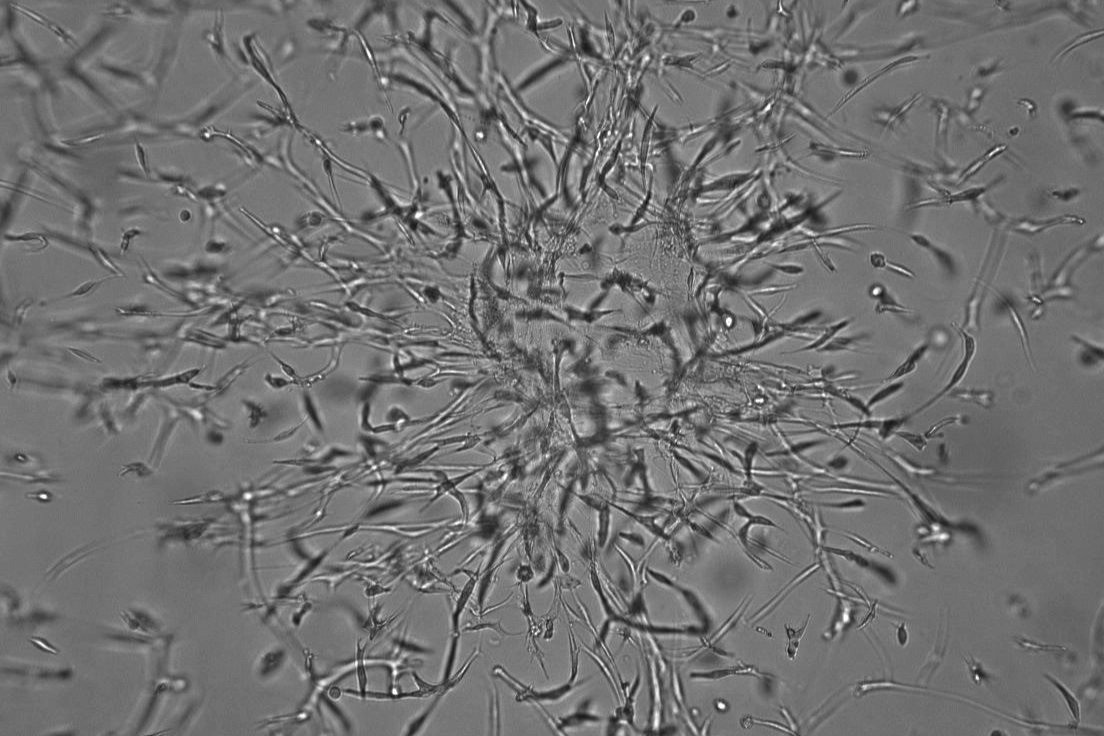Lymphangioleiomyomatosis (LAM)
Modeling and therapeutic development for the rare lung tumour lymphangioleiomyomatosis (LAM) and related tuberous sclerosis complex (TSC) tumours such as brain tumours known as SEGAs. Because LAM tumours cannot be propagated outside of the patient, we have used reprogramming of patient cells into induced pluripotent stem cells and CRISPR-mediated genome engineering to a library of mutant pluripotent stem cells that we have differentiated into the affected lineages to model these cancers. We are the first lab to develop non-transformed human cell models of LAM. Together Molly Shoichet’s lab in Toronto, we have developed a lung-like 3D environment to grow these tumours and performed screens that have identified a drug family capable of specifically kill our LAM model cells. Current projects include translating these novel drug hits in vivo, teasing apart disease mechanisms and a CRISPR-based synthetic lethal screen of TSC2 null cells to identify new drug targets.
Acute myeloid leukemia (AML)
The epigenetic control of hematopoietic stem cells (HSCs) and leukemic stem cells (LSCs). Using a combination of pluripotent stem cells, hematopoietic stem cells, and bone marrow cells from patients with acute myeloid leukemia (AML), we identified an epigenetic reader protein known as MTF2/PCL2 that recruits the Polycomb repressive complex 2 (PRC2) to regulatory sites in erythroid progenitors and an HSCs. We found that epigenetic repression of MTF2 in AML leads to epigenetic reprogramming of AML into therapy-resistant, aggressive disease, revealing a primary mechanism of refractory AML. Importantly, by drafting the gene regulatory network of MTF2 we found a therapeutic vulnerability in refractory AML, which is being tested by a phase 1b clinical trial. We are currently testing other therapeutic targets. We are exploring additional drivers of refractory AML and therapeutic vulnerabilities discovered from our gene regulatory network analyses and a CRISPR-based synthetic lethal screen.
Vascular disease and aging
Defective epigenetic inheritance in vascular disease and aging. The transmission of epigenetic marks to daughter cells during replication termed epigenetic inheritance is critical for tissue homeostasis; epigenetic drift is the failure of epigenetic inheritance leading to altered epigenetic landscapes and a hallmark of cellular aging, chronic disease, and oncogenesis. While this process is largely believed to be a random process, studying a rare premature aging disease known as progeria, we have found evidence that epigenetic inheritance is driven by the DNA damage response. We are using a variety of cutting-edge techniques to model chromatin dynamics during vascular aging and epigenetic drift, and testing these models on cardiovascular disease patient samples.





